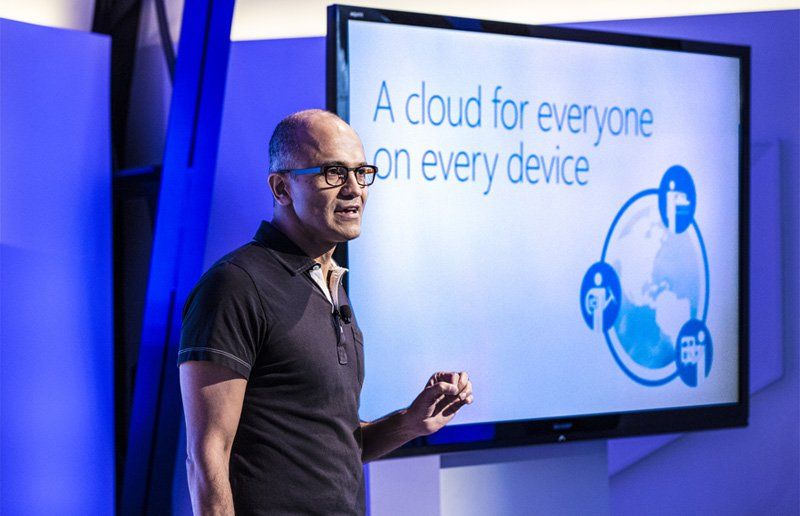Microsoft's Azure (and other cloud platforms) are always reliable ... until they aren't
On September 4, 2018, a portion of Microsoft's Azure cloud went down, and that should serve as a warning to us all.

Gone are the days when personal computing revolved around our PC and its local hard drive. The internet, a multitude of interconnected personal computing devices and the cloud have made trusting our data to that "ephemeral space" between our devices much easier.
In the early days of personal computing, we hoarded our personal data on a variety of storage medium from hard drives, floppies, jump drives and optical discs. Much like a miser secured his money beneath a mattress in his home we (individuals and business) secured our data the best we could. And just as misers began trusting banks with their money with the expectation that it would be there when they wanted it, we eventually began trusting our data to the cloud with the same expectation.
We expect to be able to access our data, whenever and virtually from where ever we want. Its always supposed to be there. And most of the time it is. Its when we can't get to it, however, that really matters.
Lightning strikes Microsoft

Earlier this month a lightning strike at one of Microsoft's Azure data centers in southern Texas caused a portion of the data center to transfer from utility to generator power. Consequently, the data center's cooling systems eventually failed. This caused excessive temperatures that ultimately damaged storage servers, network devices, and power units. As recovery workers strived to maintain customer's data integrity and to recover systems directly impacted by the storms, secondary effects of this particular outage affected a wide range of other cloud services in other regions. It took days to recover from the impact of this single incident.
The combined influence of the usual reliability of cloud services, the marketed assurance of its integrity and the technical infrastructure of various hardware and software redundancies and safeguards leaves many of us feeling that the cloud is infallible. In fact, companies like Microsoft, Amazon and Google communicate such a degree of confidence in their cloud offerings that infallibility seems inherent to the message. Realistically, though, we know that it is not. In practice, however, we live as if we believe that it is.
Many individuals, businesses and schools almost flippantly convey personal data and trust critical systems to the cloud, (AKA, computers that are miles away from them) where a third party maintains that information and hardware. Our only connection to that data is a vulnerable internet connection that is also maintained by someone other than ourselves. It's humbling and perhaps frightening to think that access to our data and some systems is as fragile as an internet connection.
Heads out of the cloud

Embracing an increasingly cloud-centric personal computing model requires multiple layers of trust in cloud providers like Microsoft and Google, and network providers like carriers and cable companies. And though the impact to customers was significant when Microsoft's cloud failed its seems those invested in Google's ecosystem would be more severely effected it its cloud failed. With a model centered around cloud-based tools and a browser-based Chrome OS Google seems particularly vulnerable (though limited offline work is possible) to a major impact if its cloud servers failed or connections to users were lost.
Get the Windows Central Newsletter
All the latest news, reviews, and guides for Windows and Xbox diehards.
The cloud is fallible.
Still, Microsoft's model, and the industry's with 5G and edge computing, is becoming increasingly cloud-centric. And we're blissfully being swept along for the ride with all the accompanying risks and benefits. I am not advocating that the cloud is terrible. Nor am I advising that individuals and entities move away from the cloud in a full embrace of the old way of doing things.
I know that Microsoft has learned from this outage and is building additional safeguards, but any human-made system has vulnerabilities to environmental and human threats and is subject to fail. The recent outage caused by a natural weather condition and which had an impact spanning multiple days is dictating to all of us that the cloud is, indeed, fallible.
What will you do?
We've all jumped on the cloud computing train and most of our experiences have been smooth and uneventful. This may be lulling us into a false sense of the cloud's reliability, however. Perhaps, we should temper our embrace of the cloud with some commonsense notions of its susceptibility to failure. The events impacting Microsoft's Azure datacenter in Texas suggest that indeed we should.
Though it's said that lightning doesn't strike the same place twice the truth is, it does. Thus, if a portion of Microsoft's datacenter can go down once, any cloud datacenter anywhere can be impacted with some form of outage. When that happens, what will you do?
Jason L Ward is a columnist at Windows Central. He provides unique big picture analysis of the complex world of Microsoft. Jason takes the small clues and gives you an insightful big picture perspective through storytelling that you won't find *anywhere* else. Seriously, this dude thinks outside the box. Follow him on Twitter at @JLTechWord. He's doing the "write" thing!
